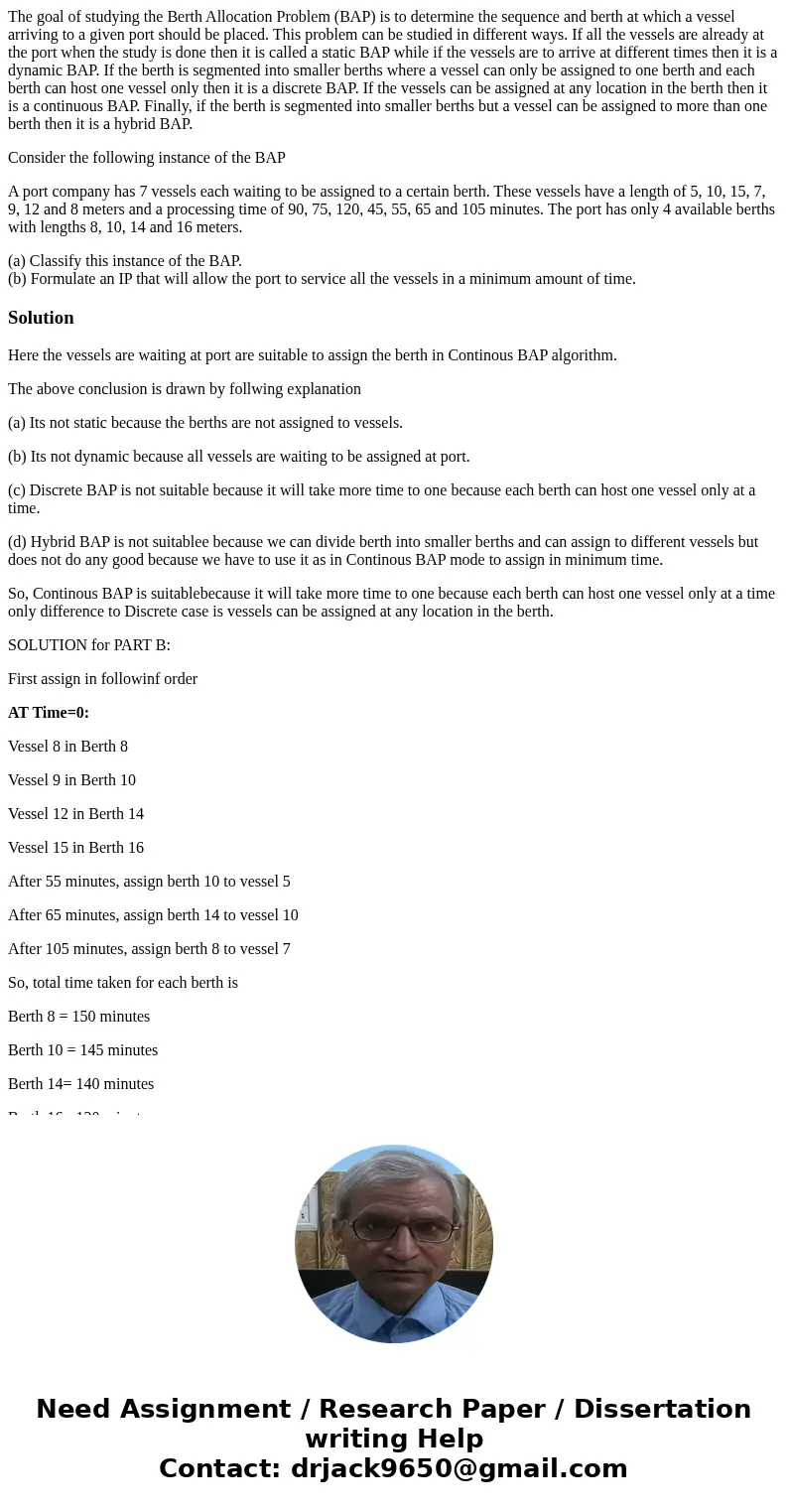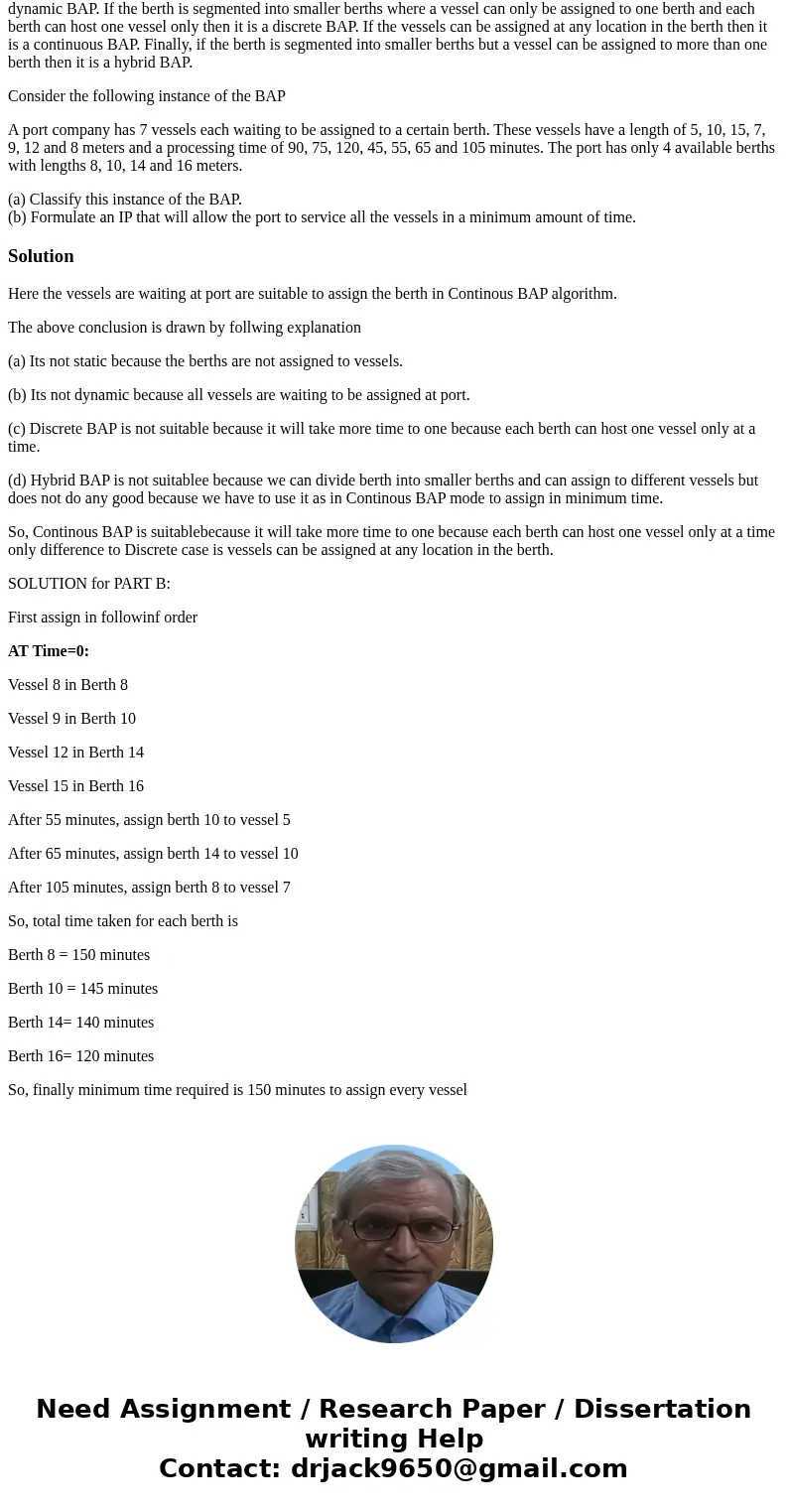The goal of studying the Berth Allocation Problem BAP is to
The goal of studying the Berth Allocation Problem (BAP) is to determine the sequence and berth at which a vessel arriving to a given port should be placed. This problem can be studied in different ways. If all the vessels are already at the port when the study is done then it is called a static BAP while if the vessels are to arrive at different times then it is a dynamic BAP. If the berth is segmented into smaller berths where a vessel can only be assigned to one berth and each berth can host one vessel only then it is a discrete BAP. If the vessels can be assigned at any location in the berth then it is a continuous BAP. Finally, if the berth is segmented into smaller berths but a vessel can be assigned to more than one berth then it is a hybrid BAP.
Consider the following instance of the BAP
A port company has 7 vessels each waiting to be assigned to a certain berth. These vessels have a length of 5, 10, 15, 7, 9, 12 and 8 meters and a processing time of 90, 75, 120, 45, 55, 65 and 105 minutes. The port has only 4 available berths with lengths 8, 10, 14 and 16 meters.
(a) Classify this instance of the BAP.
(b) Formulate an IP that will allow the port to service all the vessels in a minimum amount of time.
Solution
Here the vessels are waiting at port are suitable to assign the berth in Continous BAP algorithm.
The above conclusion is drawn by follwing explanation
(a) Its not static because the berths are not assigned to vessels.
(b) Its not dynamic because all vessels are waiting to be assigned at port.
(c) Discrete BAP is not suitable because it will take more time to one because each berth can host one vessel only at a time.
(d) Hybrid BAP is not suitablee because we can divide berth into smaller berths and can assign to different vessels but does not do any good because we have to use it as in Continous BAP mode to assign in minimum time.
So, Continous BAP is suitablebecause it will take more time to one because each berth can host one vessel only at a time only difference to Discrete case is vessels can be assigned at any location in the berth.
SOLUTION for PART B:
First assign in followinf order
AT Time=0:
Vessel 8 in Berth 8
Vessel 9 in Berth 10
Vessel 12 in Berth 14
Vessel 15 in Berth 16
After 55 minutes, assign berth 10 to vessel 5
After 65 minutes, assign berth 14 to vessel 10
After 105 minutes, assign berth 8 to vessel 7
So, total time taken for each berth is
Berth 8 = 150 minutes
Berth 10 = 145 minutes
Berth 14= 140 minutes
Berth 16= 120 minutes
So, finally minimum time required is 150 minutes to assign every vessel


 Homework Sourse
Homework Sourse